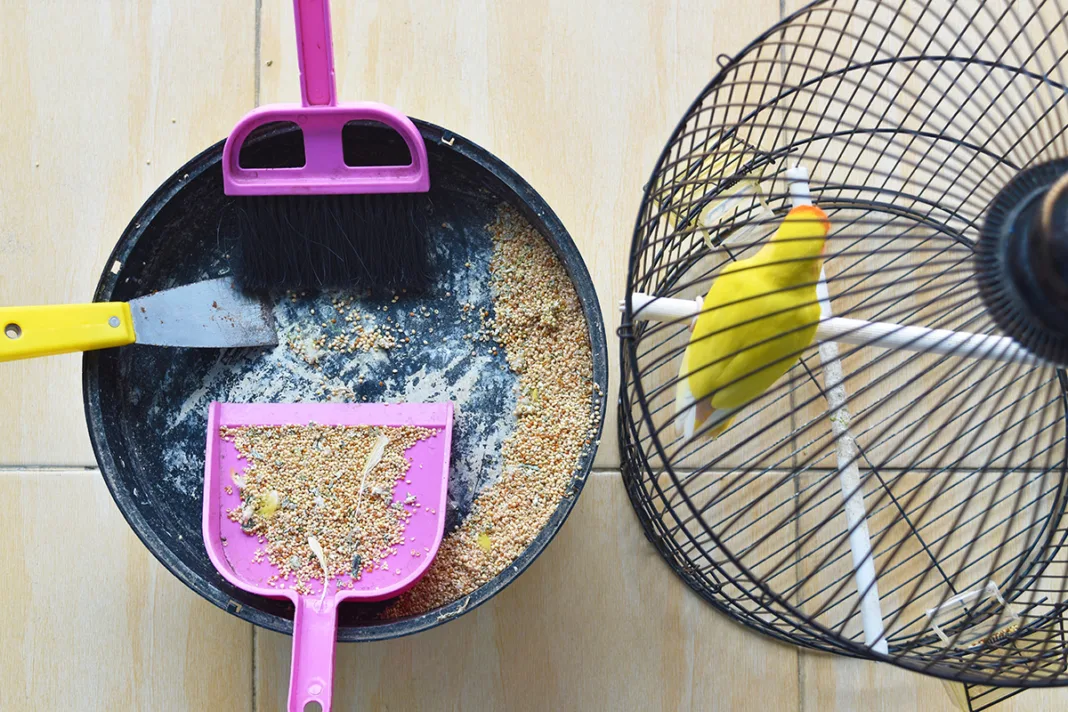Got your cleaning checklist sorted for the winter? DAVE BROWN lists some of his must-have hygiene utensils.
Regular cleaning of the aviary or birdroom is a must if we are to keep our birds and ourselves healthy. Allowing a build-up of dust and droppings will make cleaning out far more of a chore if it is left for long periods of time, so a policy of little and often is definitely the best approach.
There are various items that are worth investing in to make the routine of cleaning as easy and efficient as possible. A selection of brushes is the most basic of requirements and a good broom for sweeping the floors every day is a must. A stiff broom with plastic bristles can be used for both the daily sweep up and for scrubbing aviary floors with water and detergent, which will avoid kneeling down to scrub. Smaller nylon scrubbing brushes are also useful for the less regular cleaning of cages and perches, as are scrubbing sponges. For hard-to-reach cage corners, and the runners used for holding cage dividers, old toothbrushes can be very handy.
Toothbrushes are also ideal for scrubbing the mouthpieces of drinkers, while a bottlebrush will efficiently clean the actual drinker cylinder. Incidentally, toothbrushes are great for grooming frill canaries before a show to enhance their appearance.
The scrapers more usually sold for cleaning pigeon lofts are invaluable for scraping cage trays and aviaries. I find mine particularly useful for cleaning inside flights. Droppings are quickly removed from the exposed battens of the flight panels and solid walls. I then pile the floor litter into a corner of the flight, scrape the floor of any further dropping and then use the scraper to load a dustpan with the rubbish.
While the above tools are all you need, a vacuum cleaner soon becomes a favourite piece of kit once purchased. There are various models on the market but one designed for wet and dry cleaning with a large storage capacity is the best investment. A washable filter is best to maintain the machine’s efficiency.
If the budget will allow, a steam cleaner is useful for providing a real deep clean. Droppings are truly lifted and the warm steam acts as a steriliser for cage walls and floors, which is a great chemical free way of destroying any exposed clusters of mite.
Finally, draught-excluder brushes fitted to the birdroom door will help to retain heat and unnecessary draught in the birdroom during the winter months.
Dave Brown keeps zebra finches, frill canaries and Serama bantams.
Find more news and articles like this on the Cage & Aviary Birds website. Subscribe to Cage & Aviary Birds magazine now.


